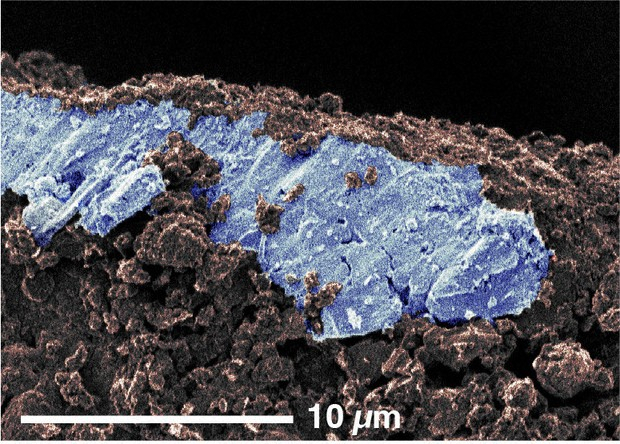
In a groundbreaking discovery, Japanese researchers have identified sodium carbonates, commonly known as salt crystals, in samples from the Ryugu asteroid. These samples were brought back to Earth by the Hayabusa2 space probe.
The findings, which were published in the online journal Nature Astronomy, were the result of a collaborative effort by a team from Kyoto University, Tohoku University, and other institutions.
The discovery of these salt crystals is considered crucial for understanding the evolution of organic materials in relation to water and other substances in celestial bodies. The researchers used electron microscopy and other techniques to observe four crystals in the samples.
These crystals were up to around 500 micrometers long, 20 micrometers wide, and 1 micrometer thick. The crystals consisted of rock salt, sodium carbonate, and sodium sulfate.
To prevent the salts from degrading under electron beams, the team used reduced beam intensity during the analysis. The Ryugu asteroid's parent body is believed to have contained large amounts of salt water some 4.6 billion years ago.
However, the fate of that water remains unclear. Salt crystals typically form when salt water's saline concentration is high, suggesting the water may have disappeared through evaporation or freezing.
Implications of Discovery
The crystal structures resemble salts found in subsurface oceans on Ceres, a dwarf planet located between Mars and Jupiter, and Enceladus, one of Saturn's moons.
Toru Matsumoto, a program-specific assistant professor at Kyoto University's Hakubi Project, commented, "This is an important step in understanding the evolution of organic matter in environments similar to oceans within our solar system."
The discovery of salt crystals on the Ryugu asteroid is not an isolated event. It is part of a broader narrative of space exploration and research that seeks to understand the origins and evolution of our solar system.
For instance, the BepiColombo International Mercury Exploration Project has revealed that chorus waves occur quite locally in the dawn sector of Mercury. These waves are believed to be the driving source of Mercury's X-ray auroras.
Moreover, the chemical evolution of primordial salts and organic sulfur molecules in the asteroid 162173 Ryugu have long been under study. Polythionates, often produced by thiosulfate oxidation, are stable under acidic conditions, consistent with the measured pH of the salt fractions of both A0106 and C0107.
The Future of Space Exploration
The presence of soluble oxygenated sulfur species and the resulting weakly acidic conditions provide an opportunity for extending the high molecular diversity of extraterrestrial CHNOS and CHOS molecules.
These discoveries and research efforts are part of a larger endeavor to understand the origins and evolution of our solar system. They provide valuable insights into the chemical and physical processes that have shaped celestial bodies over billions of years.
As we continue to explore the cosmos, we can expect to uncover more secrets about the universe and our place within it. These observations will have a wide impact on the scientific understanding of Mercury's environment.
The Mio spacecraft is on its way to carry out a comprehensive exploration of Mercury. Based on flyby observations we have found that magnetic field distortion is responsible for the local generation of the chorus waves.
The discovery of salt crystals on the Ryugu asteroid and the subsequent research efforts have opened up new avenues in our understanding of the universe. These findings underscore the importance of continued investment in space research and exploration, as they hold the key to unlocking the secrets of our universe.









